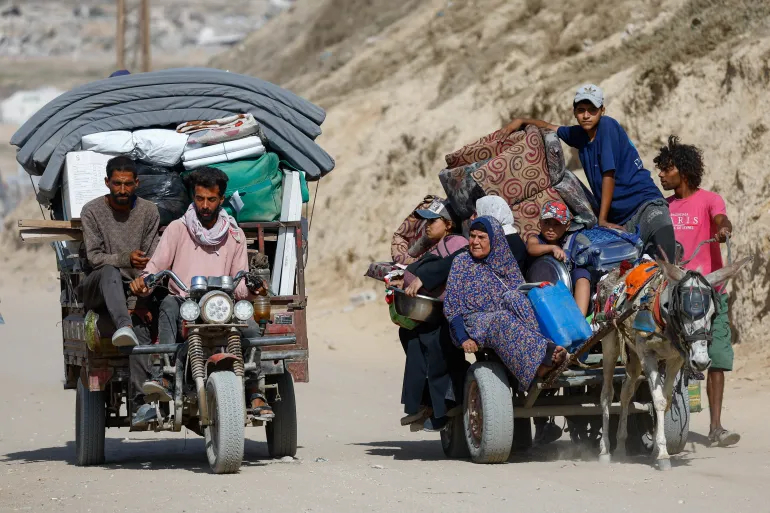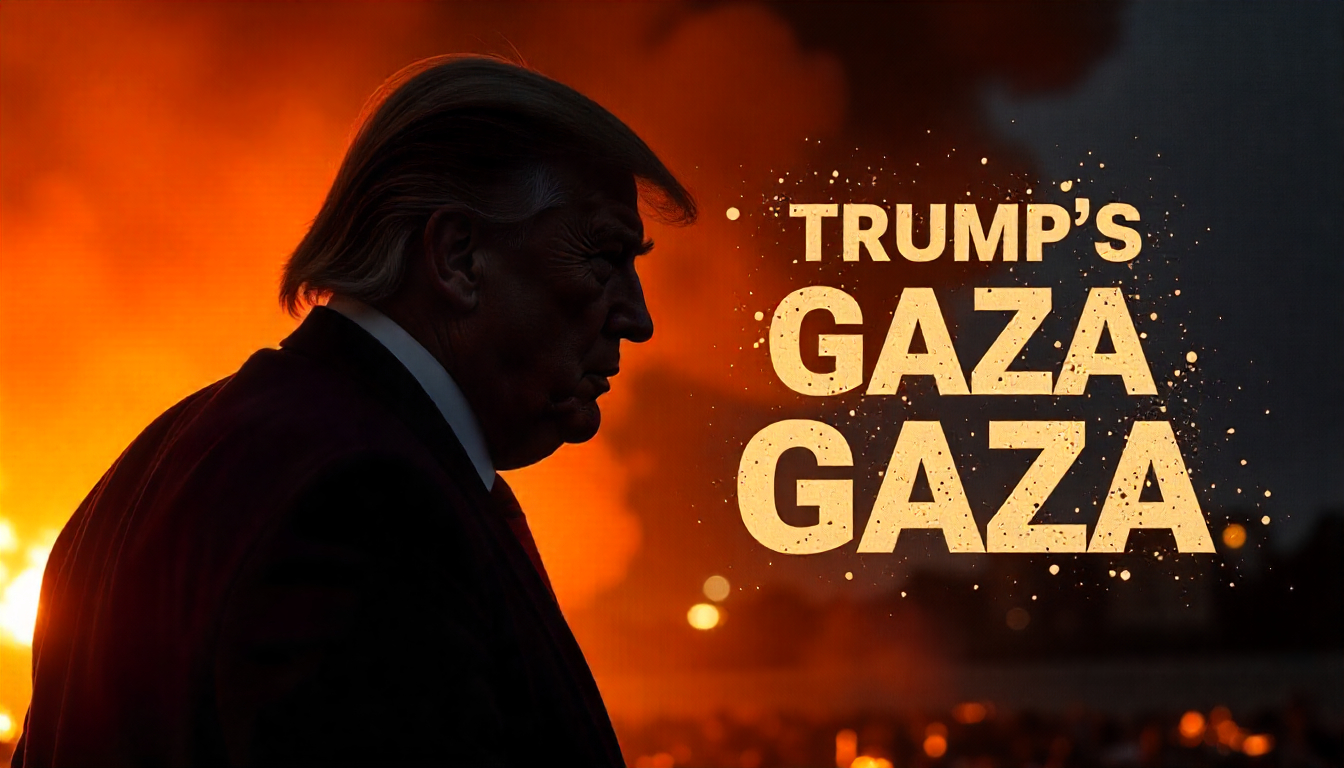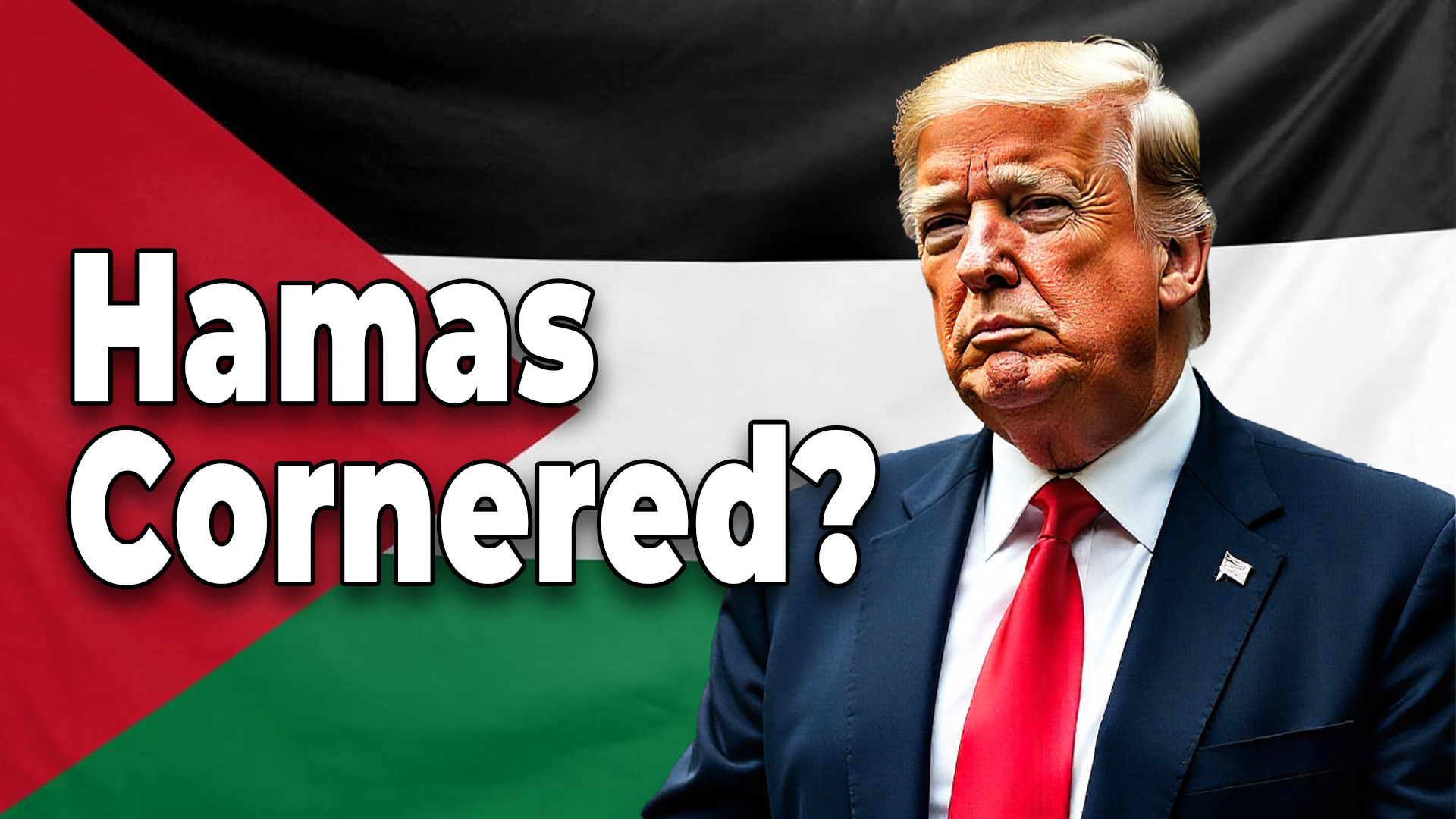President Donald Trump’s high-profile 20-point Gaza proposal, unveiled in late September 2025, was advertised as a blunt, all-or-nothing deal: an immediate ceasefire, the full return of hostages, the total demilitarization and dissolution of Hamas, and a temporary international governing body for Gaza that includes a U.S. role (and reportedly Tony Blair). The plan comes with a tight timeline, explicit U.S. backing, and public pressure on Hamas to accept quickly — apparently within days. If Hamas refuses, Israel’s leaders — including Prime Minister Benjamin Netanyahu — have repeatedly warned they will press on militarily, vowing to “finish the job.” 1
Below I walk through the plan’s main provisions, explain which clauses Hamas is most likely to reject, and assess the credible ways Israel could respond militarily even if Hamas says “no.” I rely on reporting and expert commentary from the last week and flag the most consequential legal, humanitarian, and operational problems along the way. 2
The Assassination of Charlie Kirk & the New Age of Violence
Quick summary of the proposal (core elements)
The public outline and reporting identify roughly these headline elements:
- An immediate ceasefire if both sides accept.
- A staged Israeli withdrawal from Gaza to an agreed line, conditional on a verified release of hostages and Hamas disarmament.
- Hamas must disarm, dissolve as a governing and military body, and surrender command-and-control and weapons.
- Hostage-for-prisoner exchanges, with detailed timelines for release (reporting mentions 72-hour windows).
- A transitional governing body for Gaza — temporary international administration with oversight, including a U.S. role and involvement by Tony Blair and other international actors.
- International monitors, humanitarian access guarantees, and long-term reconstruction promises.
- Heavy pressure: the White House publicly set short deadlines for Hamas to accept, and signalled military consequences if it refused. 3
Line-by-line analysis (practical meaning and friction points)
1) Immediate ceasefire if both sides agree.
What it means: Hostilities stop at once — no strikes, no ground operations. Humanitarian corridors open.
Why Hamas might accept or hesitate: A ceasefire is attractive in theory, but only if it’s verifiable and durable. Hamas has accepted short pauses before only to see operations resume. Trust is near zero. Many Hamas leaders would worry the pause is a prelude to forced disarmament and political elimination. 4
2) Hostage return within a tightly defined timeline (reported 72 hours after Israel’s acceptance).
What it means: Rapid, near-instant exchange of hostages for Palestinian detainees — contingent on Israeli verification steps.
Why Hamas balks: Hamas has historically used hostages as bargaining chips; committing to return all hostages quickly (especially when some are allegedly deceased or held by splinter cells) under Israeli verification is a politically costly pledge. Hamas fears being required to release fighters or reveal positions that would invite immediate Israeli strikes. 5
3) Demilitarization and dissolution of Hamas as a political actor.
What it means: Hamas would renounce armed struggle, dissolve its military and quasi-state institutions, and surrender weapons to international monitors or Israeli forces.
Why Hamas will almost certainly reject it: This is the core non-starter. Disarmament equals political death for Hamas: it would lose its raison d’être, its patronage networks, and bargaining leverage. Previous demobilizations in other conflicts took years and large-scale programs; an immediate, unconditional dissolution is not credible to Hamas leaders or many Gaza civilians. International monitors would struggle to collect hidden caches; fighters could simply melt into civilian populations. Experts say forced, rapid demilitarization is historically rare and practically fraught. 6
4) Transitional international governing body (U.S./Tony Blair involvement).
What it means: Gaza governed temporarily by an externally supervised authority while security and institutions are rebuilt.
Why Hamas rejects it: It removes Palestinian self-rule and hands sovereignty, even temporarily, to outsiders — anathema for Hamas and many Palestinians. The idea that Gaza’s leadership would be replaced by a committee that includes figures seen as biased (or by the U.S.) is easy to brand as occupation in different clothes. 7
5) Israeli staged withdrawal to a security perimeter with undefined “no resurgent threat” caveat.
What it means: Israel withdraws in phases only after conditions are met, but can retain security control/perimeter until assured of no resurgence.
Hamas concern: Vague security caveats have historically enabled ongoing Israeli military presence and incursions. Hamas and Gaza residents fear a permanent security cordon or de facto annexation of parts of Gaza. The caveat gives Israel flexible grounds for continuing operations. 8
6) Aid, reconstruction pledges, and incentives for Gaza’s economy.
What it means: Promises of reconstruction funds and private investments, subject to security guarantees and demilitarization.
Why sceptics worry: Without rapid and secure delivery, humanitarian pledges will ring hollow. Reconstruction on any scale requires secure supply lines; if hostilities restart, funds and workers won’t arrive. Donors also worry about vetting and corruption risks. 9
Which conditions will Hamas (and allied Palestinian factions) likely reject?
- Immediate, unconditional disarmament and dissolution of Hamas as both a military and governing entity. This is a core identity and survival demand; surrendering arms equals political death. 10
- Temporary foreign governance that sidelines Palestinian authority and civil society — many see this as external control or occupation. 11
- Very short, rigid hostage timelines tied to Israeli withdrawal (e.g., 72 hours), because logistics, factional control, and verification are obstacles. 12
- Security caveats that let Israel maintain a perimeter indefinitely — Hamas fears an indefinite state of Israeli control. 13
Taken together, these terms demand that Hamas trade its arms and political future for promises it may find unenforceably weak and too risky to accept.
If Hamas rejects it, how might Israel “finish the job”?
Public messaging has been explicit: Prime Minister Netanyahu has said Israel “must finish the job,” and Israeli leaders have signalled a willingness to proceed militarily if diplomacy fails. Here are plausible, escalatory steps Israel could take — some already in practice — that amount to an invasion or an intensification of operations even after talks fail:
- Full-scale ground offensive into dense urban centres. Israel could intensify ground operations aimed at destroying Hamas command nodes and tunnel networks. Past campaigns show urban offensives are costly in lives and infrastructure but can degrade militant capacity. The plan’s requirement that Hamas disarm or face military action gives political cover for escalation.
- “Targeted” decapitation strikes and special forces raids. Intelligence-led strikes on leadership and logistic hubs can be stepped up to erode Hamas cohesion. Israel’s intelligence reach and special-ops assets make high-value targeting plausible.
- Sustained siege and perimeter control. Even without deep urban occupation, Israel can impose a tighter blockade and control critical entry points and crossings, effectively strangling Gaza’s economy and movement — pressuring civilians and leadership alike. The plan’s “security perimeter” language already contemplates this.
- Annexation-style security zones or buffer administration. Israel could formalize long-term security control over parts of Gaza (shorelines, border corridors), leaving a hollowed Palestinian administration with limited sovereignty — in effect, partial occupation under a different name.
- International/legal cover via allied support. The U.S. public backing of the plan, and pressure from allied states for Hamas to accept, can be used by Israel to legitimize tougher steps if the group rejects terms — i.e., “we gave them a chance, they refused.” This political argument reduces some international political costs even as humanitarians and many states object.
All of the above carries enormous humanitarian, legal, and political risk. A deeper invasion risks mass civilian casualties, further radicalization, and long-term instability. Israel’s leaders calculate these costs against the political imperative to secure the hostages and neutralize the threat they see from Hamas.

Displaced Palestinians flee northern Gaza amid Israeli military operations, and following Israeli forces’ forced evacuation orders, in the central Gaza Strip [Mahmoud Issa/Reuters]
Why the plan is unlikely to produce a durable peace without heavy compromise
- Trust deficit: Gaza has seen repeated cycles of ceasefire and renewed conflict. Neither side trusts the other to implement complex, phased obligations. Verification mechanisms will be highly contested.
- Enforcement problem: Who credibly compels Hamas to disarm? International monitors struggle in chaotic, violent environments; Israel could claim non-compliance and resume operations.
- Humanitarian urgency vs. political aims: The humanitarian catastrophe in Gaza makes any military escalation morally and politically fraught. Yet the plan links aid and reconstruction to disarmament — a classic Catch-22.
What this means for regional politics and international law
- Short term: The proposal raises pressure on Hamas and creates a diplomatic window — but the very terms press Hamas into an existential choice that many observers expected it to reject. If Hamas refuses, Israel’s “finish the job” posture suggests it will use the plan’s rejection as justification for escalation.
- Medium term: Even a successful disarmament under outside supervision would require years of institution-building; premature withdrawal by Israel or insufficient reconstruction funding could create a vacuum exploited by other militants.
- International law: Forced dissolution of a political movement and external administration raise thorny legal questions about occupation, sovereignty, and collective punishment if civilian populations suffer disproportionate harm. Humanitarian law and UN bodies will be central in assessing legality.
Bottom line — a hard ultimatum with a fragile bargain
Trump’s 20-point plan is politically bold and built to produce headlines and international pressure. But its core demands — rapid disarmament, dissolution of Hamas, a foreign-led transitional authority, and hostages returned on a tight timetable — are exactly the kinds of terms that a resistance movement will resist. If Hamas says “no,” Israel already has signalled it will act. A military campaign framed as enforcing the plan risks catastrophic humanitarian cost and long-term instability, even if it succeeds in degrading Hamas temporarily.
Sources
- Newsweek ↩︎
- The New Yorker ↩︎
- Newsweek ↩︎
- PBS ↩︎
- Newsweek ↩︎
- Chatham House ↩︎
- ABC ↩︎
- The New Yorker ↩︎
- ABC ↩︎
- Chatham House ↩︎
- ABC ↩︎
- Newsweek ↩︎
- The New Yorker ↩︎





